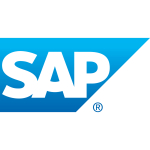The project management part of it is definitely the most valuable part of it to us. We don't get a lot of value out of resource management or portfolio management yet. It really helps reporting on overall statuses at an aggregate level that we have going on. It's really the best part.
The way we're structured, we support a lot of different organizations. If marketing wants to see the status of all things marketing, along with their impacts on other organizations, we're able to whip that together pretty quickly. In all our previous tools, that was always a black box.
It changed the way our departments talked to each other. Particularly, IT became a delivery organization along with everyone else. They didn't talk before, and now they do; so all the data is front and center. They're starting to tear down some of those walls. They're sharing data now, as opposed to just hoping everything's OK.
It comes down to the shared space aspect of it, particularly when you start talking about code releases, alignments, and things like that. It seems to be that everybody is on the same page. There are a lot of things that get exposed because they're now sharing data. Some of those risks can now be mitigated ahead of time, as opposed to last minute. That was a problem we had back before PPM.
The whole business transformation thing that all industries are going through is very big right now. Those are the higher priority projects that we're able to dedicate money, resources, time, everything to those key initiatives, as opposed before when everyone had their own priority.
It's scalable, but not great. We're a pretty large implementation. We have 120,000 active resources in the tool. We see a lot of performance impacts, particularly in the newer versions with Jaspersoft and things like that, so that part has been pretty disappointing. But, you know, it still gets the job done. It's just a little slow.
We brought in some people from Services (back when there was a Services) to do health checks and things like that. We were constantly opening up tickets, particularly with the newer versions and Jaspersoft and things like that.
We were using PTC Integrity. We outgrew it; and it didn't handle customizations very well. Of course, we overcustomized to the point where it wasn't usable. Something had to go. It was more of a workflow engine; and so, it worked for IT. But we wanted a space where we had business, IT, and other groups all in one space.
I've been there from day one. The initial setup was pretty easy. I was kind of surprised that just getting the app installed, up and running, was pretty simple. The complexities usually came with stakeholder requirements. That's where things got a little nuts; but just getting it up and running wasn't bad.
We also considered HPE. PTC was on our list early on. They had a newer version, and that just didn't do it. There were a handful, but it was six or seven years ago.
The most important factor in choosing PPM was the usability of the tool. CA was good about helping us getting it set up initially with some of the earlier requirements. We had to redo a bunch of that due to shifting business needs; but their assistance was a big factor.
Don’t overcustomize it. Just because you can do it doesn't mean you should do it. We would've been better off if we could go back in time, roll it out of the box again, and use it for a predetermined amount of time before determining what we needed to customize.
We’re using the on-premise version.
















